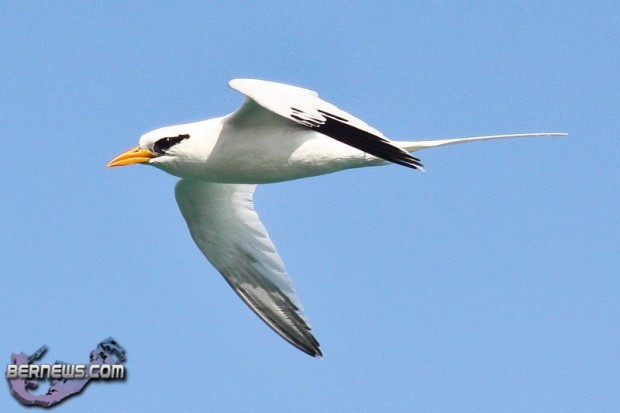Report On Longtail Breeding Success
The single biggest threat to Bermuda’s emblematic Longtail — or White-tailed Tropicbird — is the destruction of hundreds of coastal nests by high waves and erosion during hurricanes.
So in recent years Bermuda’s Conservation Department embarked on a programme to install artificial nests in areas where large numbers of nests have been lost.
And the results of a recently completed survey confirm that not only do tropicbirds readily use these nests, but that they enjoy higher levels of breeding success in them at 74.39% than they do with the natural nest sites, which have 66% breeding success.
The survey was conducted between 2009 and 2011 by Bermuda’s Terrestrial Conservation Officer Jeremy Madeiros to continue research on determining the breeding success, present status and threats affecting the species.
“The White-tailed Tropicbird is widespread through the Tropical and Subtropical Oceans of the world, including the North Atlantic, South Atlantic, Indian and Pacific Ocean basins,” said Mr, Madeiros. “It is split into at least six recognized sub-species, with the North Atlantic catsbyii subspecies nesting on Bermuda and through the Caribbean area. Bermuda is the largest and most important single breeding location for this sub-species, with approximately 2500-3000 nesting pairs, compared to about 2000 nesting pairs for the entire Caribbean region.
“The nesting population of tropicbirds on Bermuda is therefore internationally significant and of great importance to the survival of this species.”
The importance of the Longtail — Bermuda’s traditional harbinger of spring — has been recognised in law and it and its nesting sites are fully protected under the Bermuda Protected Species Act 2003.
The Conservation Department believes recommendations contained in the new report, if implemented, should help to ensure the continued protection and survival of this winged symbol of Bermuda.
The report, courtesy of the Conservation Department is below, click ‘Fullscreen’ for clarity:
2011 Tropic Bird Breeding Success and Status Report
Read More About
Category: All, Environment
Comments (2)
Trackback URL | Comments RSS Feed
Articles that link to this one:
- Video & Photos: Rehabilitated Bermuda Longtail Released | Bernews.com | September 22, 2012




Take a slow cruise around the island & see how many nesting areas have been destroyed by man through foreshore encroachment. Planning Dep approved retaining walls are all over covering longtail nesting areas. The ocean side of Morgans Island, Elys Harbour has been taken over by pigeons for many years.